Table of content
Sichuan cuisine, renowned for its bold flavors and fiery kick, has captivated food lovers worldwide. Among its many iconic dishes, Chuanbei Liangfen (川北凉粉), or Sichuan Beidou Cold Noodles, stands out as a refreshing yet intensely flavorful street food favorite. This dish, hailing from the northern regions of Sichuan Province, combines silky-smooth starch noodles with a tangy, spicy, and numbing sauce, creating a symphony of textures and tastes that linger on the palate. While traditionally enjoyed as a summer treat, its addictive qualities make it a year-round sensation. In this comprehensive guide, we will explore the art of crafting this dish from scratch, ensuring every bite captures the essence of Sichuan’s culinary heritage.
The Essence of Sichuan Beidou Cold Noodles
At its core, Chuanbei Liangfen is a study in contrasts: the cool, slippery noodles provide a canvas for a sauce that erupts with heat, sourness, and the distinctive tingling sensation of Sichuan peppercorns. The dish’s name itself reflects its origin—Chuanbei refers to northern Sichuan, while Liangfen translates to “cold noodles.” Unlike wheat-based noodles, this recipe uses pea starch or mung bean starch, which gives the noodles their signature jelly-like texture. The result is a dish that is both light and satisfying, making it a perfect appetizer, snack, or even a main course on sweltering days.
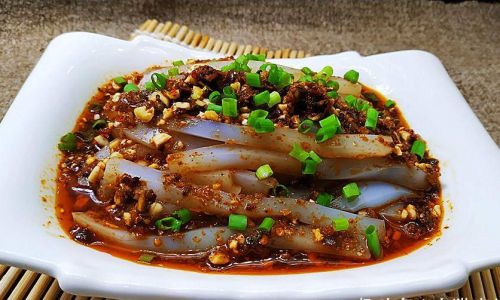
Ingredients: Building Blocks of Flavor
To recreate this dish authentically, you’ll need two primary components: the noodles themselves and the aromatic, spicy sauce. Here’s a breakdown of the essentials:
For the Noodles:
- Pea Starch (or Mung Bean Starch): 1 cup (150g) – This is the star ingredient, responsible for the noodles’ unique texture.
- Water: 5 cups (1.2 liters) – Divided into two parts: 1 cup for mixing with the starch and 4 cups for cooking.
- Salt: ½ teaspoon – Enhances the noodles’ flavor.
For the Spicy Sauce:
- Soy Sauce: 3 tablespoons – Use a dark soy sauce for depth, or light soy sauce for a saltier kick.
- Chinkiang Vinegar (or Black Vinegar): 2 tablespoons – Adds a tangy, slightly sweet note.
- Sesame Paste: 1 tablespoon – Provides richness and nuttiness.
- Garlic: 3 cloves, minced – Aromatic and pungent.
- Fresh Ginger: 1 teaspoon, grated – Warmth and subtle heat.
- Sichuan Peppercorn Oil: 2 tablespoons – Infused with toasted Sichuan peppercorns for a numbing sensation.
- Chili Oil: 3 tablespoons – Use a homemade version for maximum flavor, or store-bought for convenience.
- Sugar: 1 teaspoon – Balances the acidity and spice.
- Sesame Seeds: 1 tablespoon, toasted – For garnish and crunch.
- Fresh Cilantro: ¼ cup, chopped – Brightens the dish with herbaceous freshness.
- Peanuts: 2 tablespoons, crushed – Adds texture and toastiness.
- Optional: Finely chopped scallions, cucumber, or tofu for garnish.
Step-by-Step Preparation
Making the Noodles
The process begins with creating the starch mixture, which will later solidify into noodles.

- Mix the Starch: In a large bowl, combine the pea starch and 1 cup of water. Whisk vigorously until the starch is fully dissolved, ensuring no lumps remain.
- Cook the Mixture: In a heavy-bottomed pot, bring the remaining 4 cups of water to a gentle simmer. Add the salt. Gradually pour the starch mixture into the pot while stirring continuously with a wooden spoon.
- Stir Continuously: Over medium-low heat, stir the mixture without pause. As it thickens, the starch will transform into a glossy, translucent paste. This step requires patience—it may take 10–15 minutes. The goal is to achieve a consistency similar to thick pudding.
- Set the Noodles: Pour the hot starch mixture into a shallow dish or baking pan lined with parchment paper. Smooth the surface with a spatula and let it cool at room temperature for 1–2 hours, or until fully set.
- Cut the Noodles: Once cooled, invert the dish onto a cutting board. The starch block should release easily. Using a sharp knife, slice it into thin, noodle-like strips (about ¼ inch thick). Toss gently with a drizzle of sesame oil to prevent sticking.
Crafting the Spicy Sauce
The sauce is the soul of the dish, blending spicy, tangy, and numbing elements.
- Infuse the Sichuan Peppercorn Oil: If making your own, toast 2 tablespoons of Sichuan peppercorns in a dry pan until fragrant. Crush them coarsely and steep in ½ cup of neutral oil (like vegetable or canola) for 30 minutes. Strain before use.
- Combine the Base: In a small bowl, whisk together the soy sauce, vinegar, sesame paste, sugar, garlic, and ginger.
- Add Heat: Stir in the Sichuan peppercorn oil and chili oil. Taste and adjust the spice level to your preference.
Assembling the Dish
- Plate the Noodles: Arrange a portion of the noodles on a serving plate.
- Drizzle with Sauce: Generously spoon the sauce over the noodles, ensuring each strand is coated.
- Garnish: Sprinkle with toasted sesame seeds, crushed peanuts, cilantro, and any optional toppings.
- Serve Immediately: Enjoy while the noodles are chilled and the sauce is vibrant.
Tips for Perfecting the Dish
- Starch Quality Matters: Use high-quality pea or mung bean starch for the best texture. Avoid substituting with cornstarch, as it will yield a gummy result.
- Consistency is Key: When cooking the starch mixture, maintain a low heat and stir relentlessly to prevent lumps.
- Adjust the Spice: Sichuan cuisine is known for its heat, but feel free to reduce the chili oil if you prefer mildness. Conversely, add more Sichuan peppercorns for extra numbness.
- Texture Variations: For a softer noodle, reduce the cooking time slightly. For a firmer texture, cook the starch mixture a minute or two longer.
- Storage: Leftover noodles can be stored in an airtight container in the refrigerator for up to 3 days. The sauce can be made in advance and kept separately.
The Cultural Significance of Sichuan Beidou Cold Noodles
Chuanbei Liangfen is more than just a dish—it’s a cultural icon. Originating from the streets of northern Sichuan, it was traditionally sold by vendors who carried large, steaming pots of starch mixture and a medley of spices. Today, it remains a beloved snack, often enjoyed during festivals, family gatherings, or as a quick lunch. The dish’s popularity has spread globally, with Sichuan restaurants worldwide featuring their interpretations.
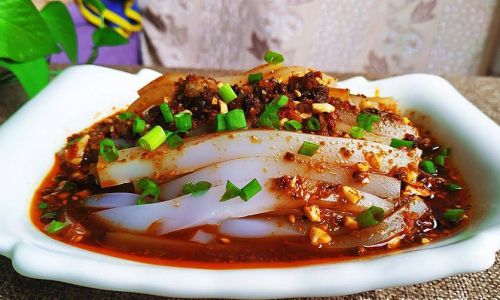
The use of Sichuan peppercorns (huajiao) is particularly noteworthy. These prickly-ash berries create a unique tingling sensation on the tongue, a sensation locals describe as má (麻). Combined with the fiery chili oil (là), this duality of flavors—málà (麻辣)—is the hallmark of Sichuan cuisine.
Health Benefits and Dietary Adaptations
While Chuanbei Liangfen is undeniably indulgent, it offers surprising nutritional benefits. Pea starch is a good source of resistant starch, which aids digestion and promotes gut health. The dish is also naturally gluten-free, making it suitable for those with dietary restrictions. For a protein boost, add diced tofu or shredded chicken. Vegetarians can enhance the dish with extra vegetables like julienned carrots or cucumbers.

Troubleshooting Common Issues
- Noodles Too Sticky? If the noodles clump together, rinse them briefly under cold water and toss with more sesame oil.
- Sauce Too Spicy? Balance the heat with an extra drizzle of vinegar or a pinch of sugar.
- Texture Too Firm? Next time, reduce the cooking time by 2–3 minutes when thickening the starch.
Conclusion
Sichuan Beidou Cold Noodles are a testament to the brilliance of Sichuan cuisine—a dance of flavors that tantalize the senses and leave a lasting impression. While the recipe may seem intricate at first glance, mastering it is a rewarding journey into the heart of Chinese regional cooking. Whether you’re a seasoned home cook or a curious novice, this dish invites you to embrace the spirit of Sichuan: bold, unapologetic, and utterly delicious. So gather your ingredients, fire up the stove, and prepare to savor a taste of China’s culinary legacy, one spicy, silken noodle at a time.
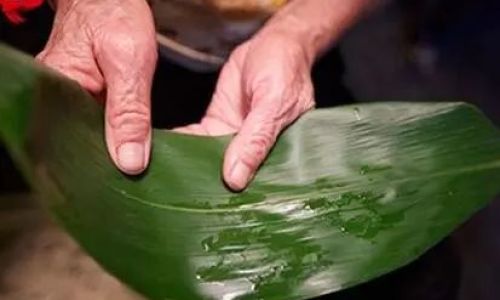


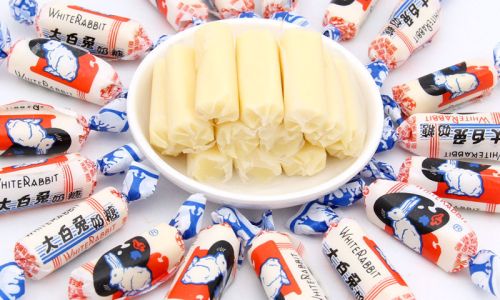
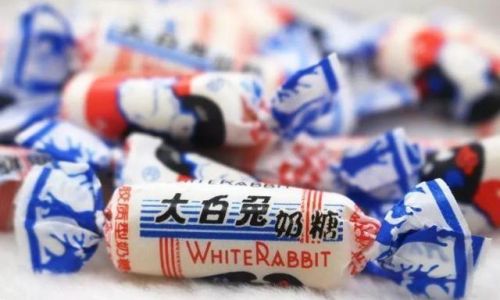
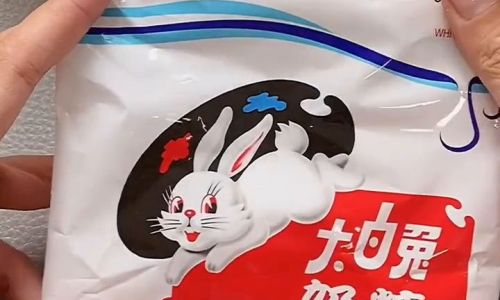
0 comments